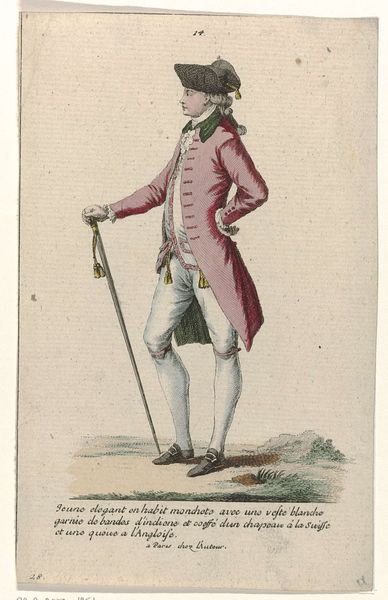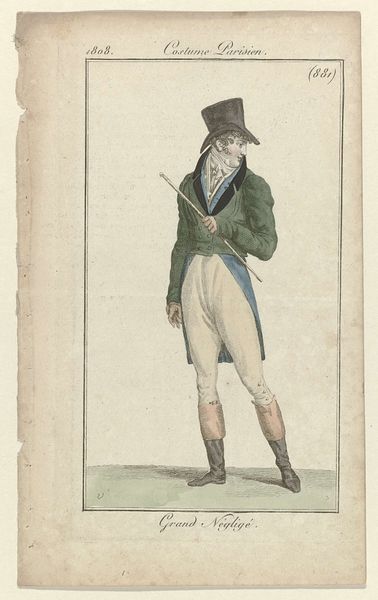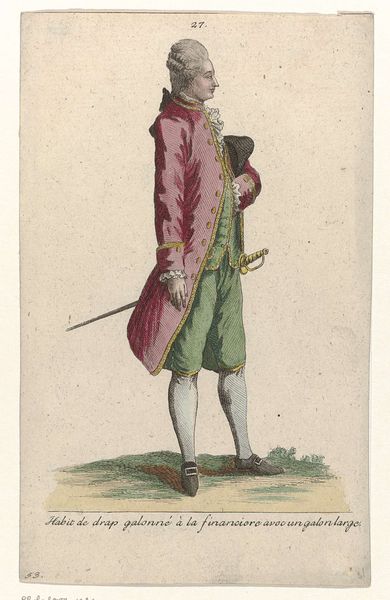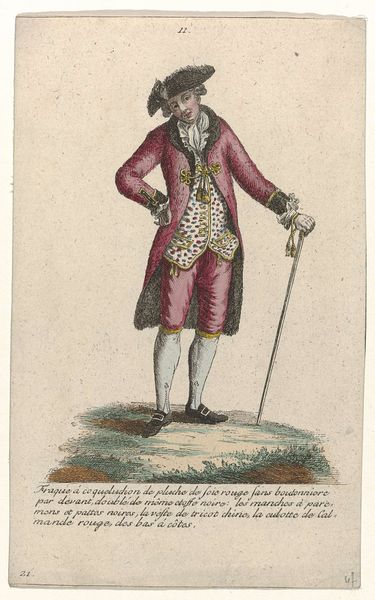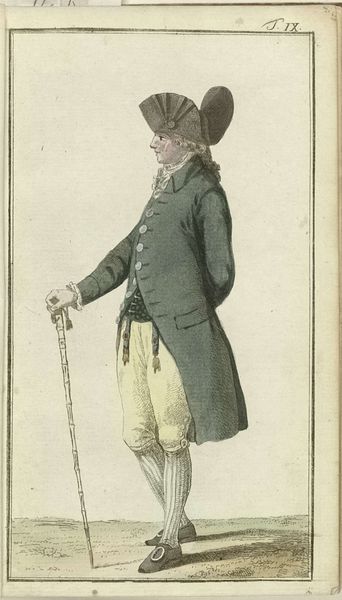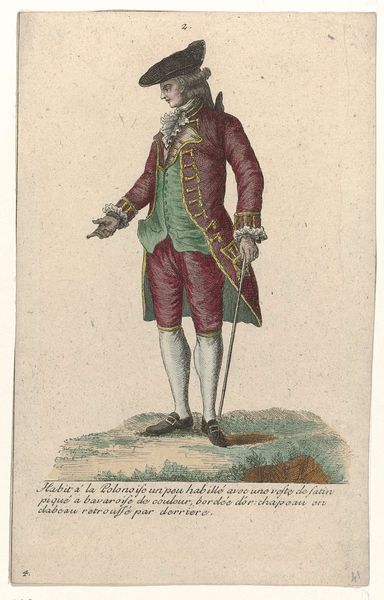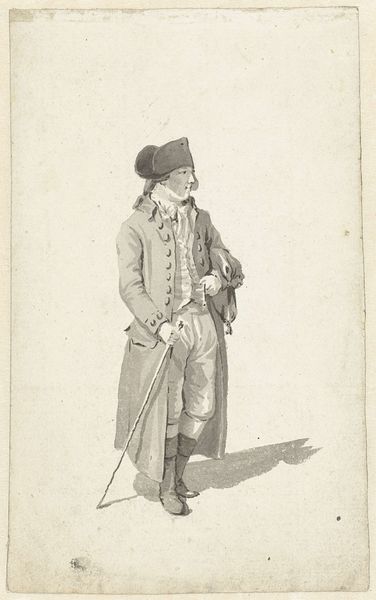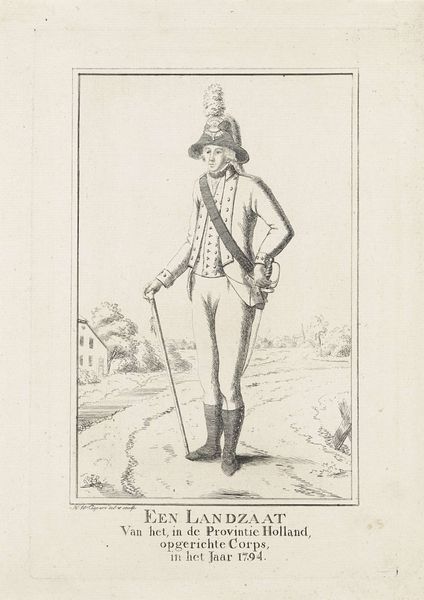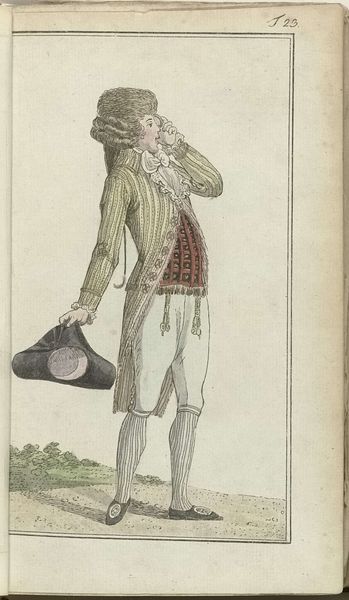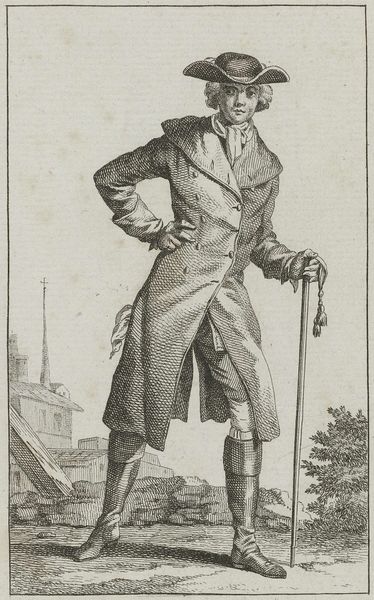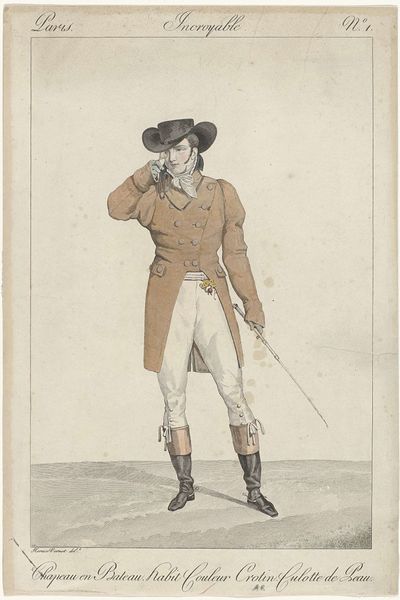
drawing, watercolor, ink
#
portrait
#
drawing
#
neoclacissism
#
watercolor
#
ink
#
watercolour illustration
#
genre-painting
Copyright: Rijks Museum: Open Domain
Curator: Looking at this plate, I am struck by the extravagance on display; it almost feels subversive! Editor: This is a plate from "Journal des Luxus und der Moden," specifically Band V, T.22, dating to 1790, from Friedrich Justin Bertuch, who was a very prolific author and publisher in his time. It’s executed in ink and watercolour, displaying a rather well-to-do gentleman and some accessories. Curator: The material depiction is rather intriguing. The very clear depiction of the buckle on the shoe as an aesthetic, the pattern in the sock, these details point to the significance of textiles and craftsmanship in shaping identity and status during this era. I bet those clothes cost more than most peoples housing. Editor: Absolutely! The Journal itself, served as a powerful vector to disseminate emerging trends, consolidating the market around luxury goods, with implications for the textile industry. But note too how images like this performed a vital social function; fashion, portraiture, genre-painting – all blending to dictate acceptable public imagery and taste! Curator: True. One might look deeper. What was the nature of the material used to make these accessories? Consider also the system in place to manufacture such clothes and whether children and other kinds of labor was used in this enterprise. This sort of journal is of course a great resource, but also deeply steeped in the realities of capitalistic exploitation and desire! Editor: Precisely, it is important not to shy away from darker historical realities. Publications like these both reflected and constructed social hierarchies. As a disseminator of imagery, this print engages in the power play between aesthetics, politics, and material reality. But overall, fashion illustration becomes more important as political powers shift as an alternative. Curator: Examining this work prompts considerations regarding the material culture surrounding status and labor. Editor: And for me, this offers insight into understanding art’s role as an instrument in societal change and visual governance during a pivotal period.
Comments
No comments
Be the first to comment and join the conversation on the ultimate creative platform.
